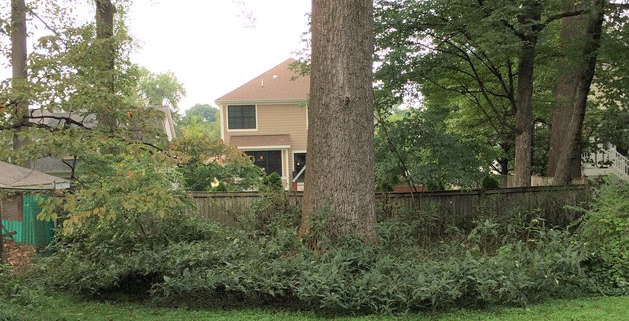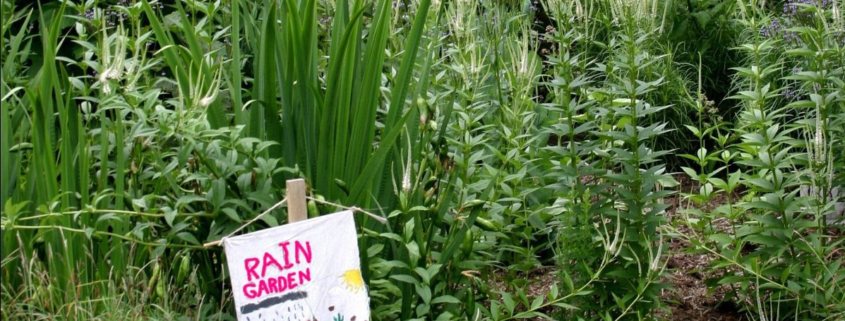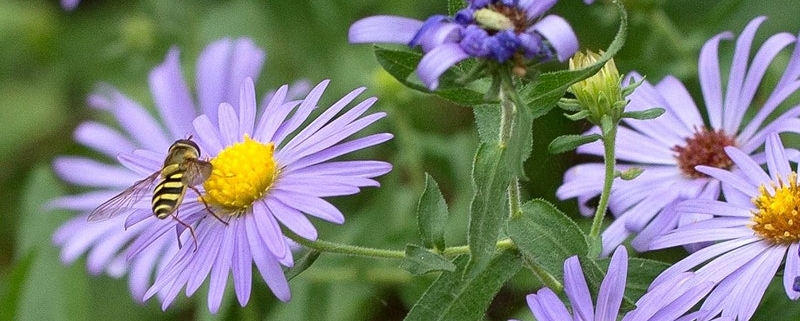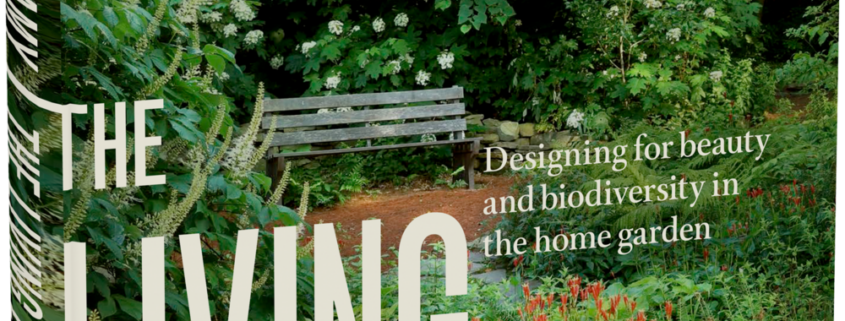Fewer Inputs to your Landscape, More Butterflies and Birds
Photo: Plant NOVA Natives
As more and more people buy native plants to beautify their yards, control stormwater and attract birds and butterflies, they are discovering additional opportunities to harmonize their property with the local ecosystem while maintaining a beautiful landscape. They are dropping some of their standard yard chores in favor of a slightly more relaxed approach.
Maintenance of native trees and shrubs is little different from maintenance of non-native ones, but chemical fertilizers are not generally recommended, and of course pesticides would be counterproductive, as they destroy the very ecosystem that the native plants were installed to enhance. The value of the native trees and shrubs is greatly increased if their fallen leaves are left in place. Within that leaf layer is where fireflies, butterflies, and many other interesting and beneficial insects complete their life cycles. Leaving the leaves where they lie has the added benefit of eliminating the chore and the incessant racket of gas-powered leaf blowers that disturb humans and songbirds alike.
Flower gardens with native plants also can be treated much the same as any other, as long as the gardener recognizes that most of these plants are perennial and not annual. The advantage of perennials is that they only need to be planted once. The disadvantage is that weeding will be needed, along with the ability to distinguish emerging weeds from emerging desirable plants, a task made easier for beginners by limiting the number of different species planted to three or four or by sticking to native groundcovers. These gardens cannot be handled the way maintenance crews typically deal with the plantings in public spaces. That method requires no knowledge of plant identification and consists of removing all the plant material each season, installing new annual plants, mulching heavily, then spraying any bare mulch with herbicides to kill everything else. (This practice explains the expanses of empty (and chemical-laced) mulch beds that we see in so many business areas.)
Of course, leaf mulch can be used in flower beds without applying herbicides and is a valuable addition to new plantings, cooling the soil and adding organic matter. In time, though, as the plants fill in, mulch becomes unnecessary and just an aesthetic choice. The plants themselves will shade the soil, and their dead foliage and stems if left over the winter add habitat for frogs and nesting areas for native bees. The days of “cleaning out” flower gardens in the fall so that only empty beds remain are rapidly fading away, as gardeners are learning that this is an unnecessary and somewhat harmful practice.
The watering requirements of native plants are generally light, if appropriate plants are chosen for the site. Unlike turf grass, which evolved in Europe and is poorly suited to Virginia summers, and annuals which start out the summer with very few roots, well-established native plants are adapted to our climate. Watering is needed right after planting, and for the first year or two in the case of trees larger than seedlings, depending on the size. Native plants in medium or large pots will need continued watering primarily when the temperature exceeds 90 degrees. Beyond that, supplemental watering may actually be bad for some plants.
Details on low-input yard maintenance can be found on the Plant NOVA Natives website. For those who don’t want to do the gardening themselves (which is most people, after all), there are landscaping companies that specialize in maintaining naturalized landscapes and who have workers who can identify the native plants and protect them. The website has a list of Northern Virginia companies that have self-identified as having the requisite expertise. Manuel Rivas, the owner of one of these companies, volunteered to be interviewed to explain the process in English and in Spanish. Three versions of that video are available on YouTube, in English alternating with Spanish and in the two languages separately.
English and Spanish version
Spanish only
English only





